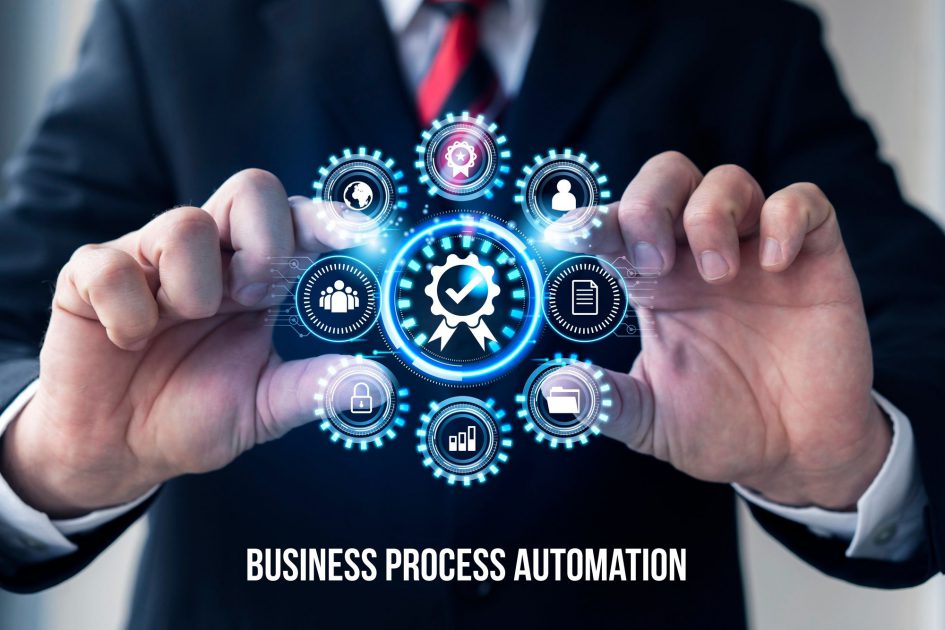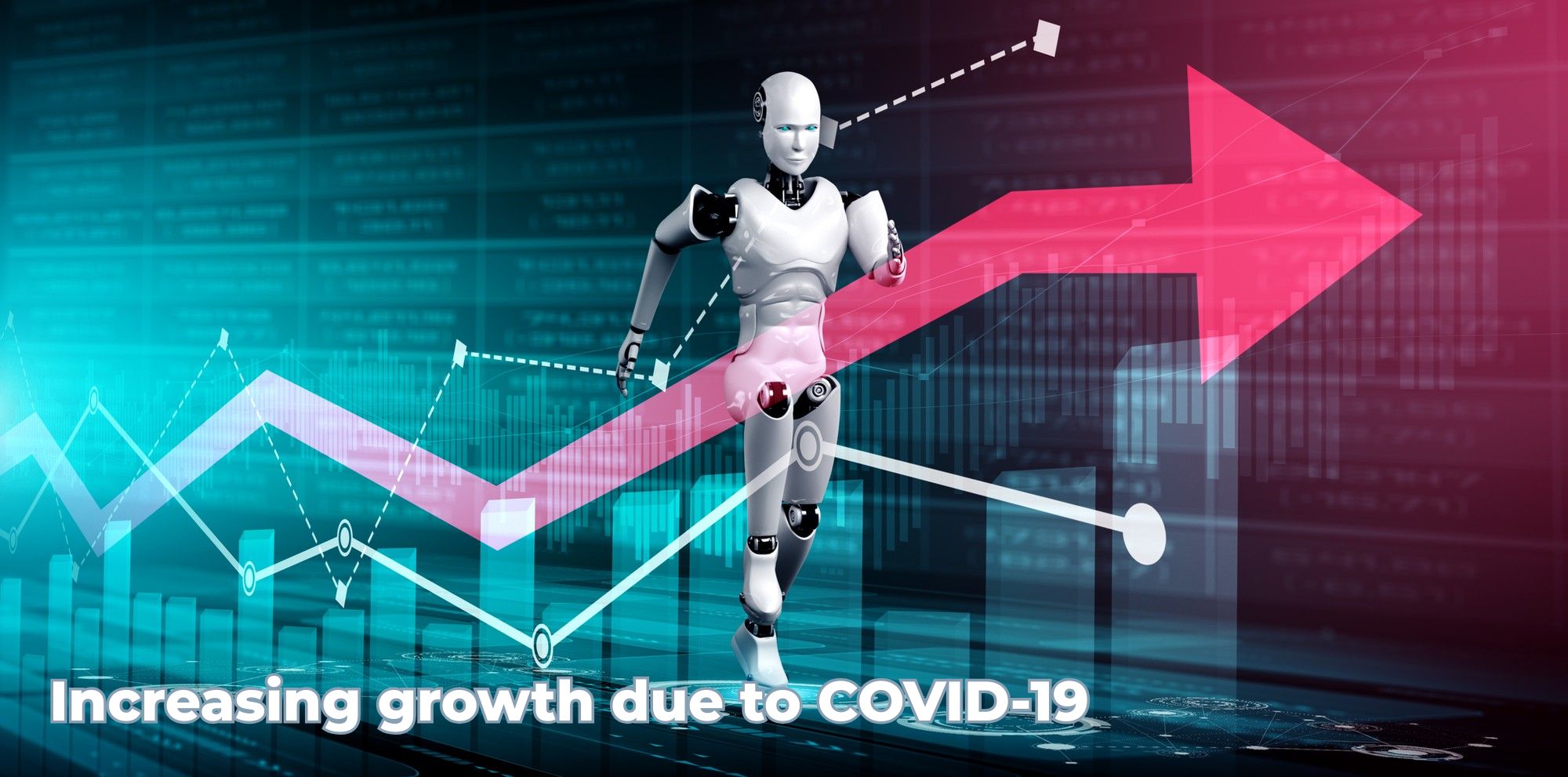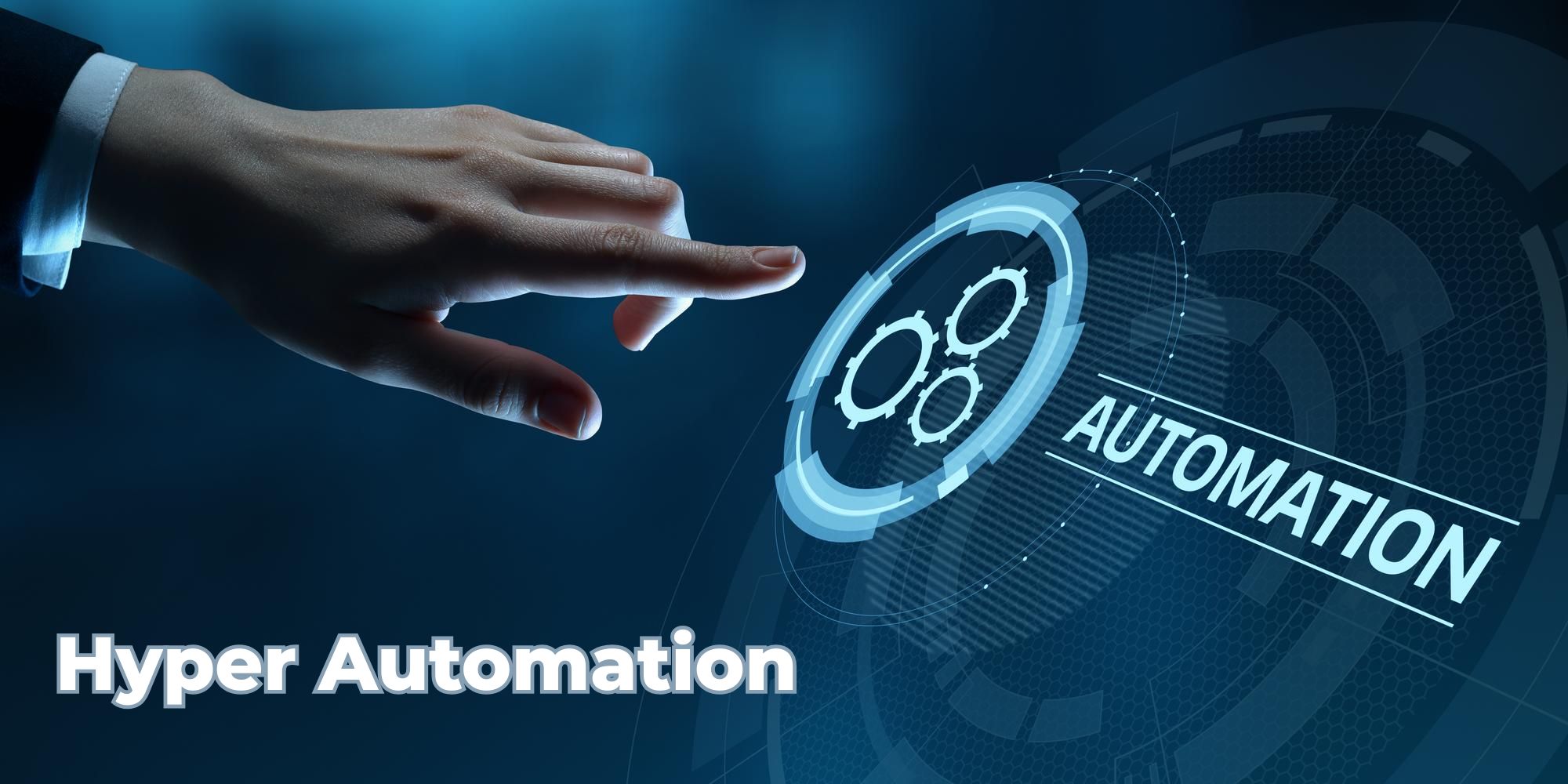In recent years, a high number of companies across the globe have been driven by AutomationAutomation. As per McKinsey, the percentage of companies that completely automatized at least one aspect has increased by 31% by 2020.
A function typically comprises many business processes. Therefore this number suggests that the tendency toward Business Process Automation (BPA) is steadily increasing.
You’ve been famiYou’veith the phrase Business Process Automation before, maybe more frequently in the recent past. Typically, the term is used in conjunction when discussing administrative or back-office jobs that are a part of most enterprise business procedures.
What does BPA mean exactly? If you’re searching, you’re exhaustive explanation of BPA and it’s the right thing. This comprehensive guide will explain Bowe, its current trends in 2021, how implementing BPA can benefit your company, and much more!
Let’s begin by dLet’sng BPA.
BPA stands for Business Process Automation. (BPA) Let technology perform repetitive tasks and help decrease the necessary tasks off your shoulders. In other words, you could get the task or business procedure completed with no involvement from you.
The automation software used in the process often uses AI and machine learning (AI) which means that neither brains nor hands are needed to finish certain tasks.
The common business process comprises a set of tasks that require employees to manually complete tasks that are not very important, such as entering information into a system to create reports in spreadsheets or verifying a customer’s identity in an onboarding procedure.
These are just a few examples since BPA can be used in various ways for various specific companies across the industry.
The main goal of BPA is to shift employees from mundane and administrative tasks to the important projects they were recruited for initially. Thus, employees’ core employees applied to jobs required to perform. There’s an extenThere’srket that caters to BPA requirements. Each provider with its own specific expertise in certain industries or tasks.
However, before applying for BPA your website’s structure should be robust. No matter if it’s a Mobile App development or Web development to apply BPA, for example, in setting AutomationAutomation to get notified and automatically register the order of your client who purchased your services from your Website/App, the website’s structure for the BPA to work efficiently.
Whether you’re working with web or app development, Acuwebtech‘s expertise spans various technologies, be it PHP frameworks or Java solutions. They can handle it all for you.
Humans have been inclined to automate tasks. If we look back at our ancestors, the Ancient Greeks, Charles Babbage, and his invention of the steam-powered calculator in the 1800s as the earliest forms of automation.
For a more thorough background of Business Process Automation, It is better, to begin with the advent of the material requirements plan (MRP) methods as the precursor to the Enterprise Resource Planning (ERP) system.
The MRP system was initially introduced in the 1960s, and it could automate the planning of purchasing items in the logistics industry. This kind of planning automation subsequently extended to other industries in the 1970s and acquired new capabilities throughout the 1980s. In the next decade, ERP systems were introduced mostly as software that helped business processes through digital databases.
In the decade 2000, when AutomationAutomation was introduced, it took the forms of artificial learning (ML) and machine learning (AI), which led to the term “automation” being given a “new meaning. An AI can now train the data humans normally process to make business processes available to computers.
We are currently seeing robotic procedure automation (RPA) development, which lets AutomationAutomation be done through an interface for users. This makes it easier to use AutomationAutomation for a growing number of companies across a broader range of industries. These systems are included under the scope of automated business procedures.
BPA, BPO, BPM, and RPA
The language used in various business-processing solutions can be confusing, as they are interconnected or interrelated with each other. Therefore, let’s look at these options in a brief but concise overview.
The Business Process Automation (BPA) is the foundation of our complete guide. It is anything that aims to accomplish tasks and complete processes by automating them and optimizing a company’s work company’s general BPA entails a form of software used to support a particular process or a complete workflow. Its goal is to improve speed, accuracy as well as cost-efficiency.
The cost and efficiency are major factors in deciding to go with either BPO or BPA. It is important to understand that choosing BPA can save you up to sixty percent of the money you typically pay for BPO.
Business Process Management is a general term that describes the approach businesses use to improve certain processes in their workflows. It’s looking at your processing capabilities using the lens of efficiency improvements and cost savings. In a sense, BPA, BPO, and RPA are methods aimed at using tools to this aim, while BPM is designed to provide an overview of your process’s optimiprocess
Robotic Process Automation (RPA) is a different way to automate everyday tasks. However, it concentrates on cutting-edge technologies in machine learning and AI, also known as robotics.
It is an aspect of BPA that is a different approach emphasizing technology and AutomationAutomation.
As we said, the method is expected to be becoming more commonplace to propel businesses toward a long-term sustainable future. Some companies also offer RPA components that can integrate into popular RPA platforms like AutomationAutomation Anywhere, UiPath, and Mendix. These terms are often used together, which is why it is important to recognize their differences.
What are the latest BPA trends?
The evolution of BPA solutions never comes to the same level and continues to improve to keep up with technological advances in the present. As we’ve witnessed over the years, BPA is adapted to businesses’ needs, reduces the process, and makes it more efficient. Let’s look at that’s recent developments in BPA to 2021.
The worldwide pandemic prompts more companies to transition to a fully digital work environment. Today, we have what we could call “digital workers” who do most of their work via a computer.
Executives in the business world who have thought about digital transformation realized the need to speed up the process. A survey of executives conducted by McKinsey confirms that the rapid growth of digitization and automation in 67% of all businesses is fueled by the COVID-19 epidemic.
Since we’re not certain what the future will be like when things calm down, Businesses across the globe are exploring all possibilities to speed up the development of technology in replacing mundane tasks done by employees and expanding the tasks to AI. This could create hybrid companies where work is performed by BPA software and controlled by human beings.
The epidemic has inspired business leaders to find any methods that can be used to enhance their workflow automation by joining forces with the various forces in work within BPA.
Gartner defines Hyper-automation as a more efficient blend of smart business process management (IBMP), machine learning AI, machine learning, and RPA, allowing businesses to improve their automated workflows and process information at high speed.
Companies want to divert employees’ attention from routine tasks that AI could handle. So, employees can use their talents in higher-value jobs.
As Voltaire once wrote: “with great power” comes with great responsibility.” Enhancing your “business workflows through software and AI is also a call for higher security standards. Automation does not just occur in the improvement of business processes and cybercrime. Recently, CEO fraud massive automated phishing attacks that aim to steal personal information are increasingly making headlines on tech news platforms.
If utilized correctly, the automation process can help protect sensitive privacy data by establishing security checks and triggering warnings recognized by a highly trained AI. Recognizing fake logins or requests for information using an automated system that AI supports can do better if any massive cyber attack happens.
While RPA isn’t a new concept, the market is expanding rapidly. Grand View Research indicates that the anticipated expansion of the RPA market will be $25.56 billion in 2027. It will become the norm for modern business processes. Any company will likely consider investing in RPA before hiring employees to do certain tasks.
Today, advanced algorithms can perform various data analyses that human employees previously carried out. However, this doesn’t mean robots will replace humans working in their jobs and will shift the work of human workers to more advanced functions. This speeds up and improves the business processes’ efficiency and makes them more durable going forward.
What are the benefits of BPA?
Implementing BPA into your workflow routine offers numerous benefits that may not have been thought of before. Let’s review a few advantages your company could reap at the surface once you first begin to implement BPA:
Cost reduction
Automating your work with software can allow employees to reduce their FTEs to perform certain tasks concerning salary, office rental, and other expenses. The result is greater efficiency and lower costs. The savings in cost can range from 40 to 75 percent, and the investment can be repaid within a couple of years or months.
Improves efficiency and speed
It is a fact that computers can work around the clock. Computers are not tired from a full-time work schedule and can handle several tasks simultaneously. This makes it possible to run faster workflows and concentrate more efficiently on the menial tasks.
Prevents errors
Efficiency also comes from less time correcting human errors, for example, and the entry process. Humans are more susceptible to making mistakes or missing certain numbers or statistics essential to business processes. With the aid of data extraction with OCR, it is possible to be certain that errors, typos, missing data, and human mistakes can be gone forever.
Improves satisfaction of employees
The tedious tasks that typically consume more time from employees are taken away from their daily routine, allowing them to focus on what is most important to the business and themselves. This sense of significance will lead to more satisfaction at work.
Increases compliance
Automating workflows makes it easier to adhere to the requirements of compliance. You can think of the possibility of implementing automated checks and processes to ensure compliance with GDPR or simply creating documents that are GDPR-compliant.
Reduces the complexity of business processes
Because an AI employee manages all the subtasks of an automated process, they can view an entire business process as an individual task rather than a sequence of tasks.
Also, in this case, your website’s website should be smooth to ensure user convenience. If implementing user-friendliness design is a tough task for you, Accuwebtech is the way to find a solution as their experts are masters at redesigning your Website/App and specialize in PHP and Java.
Futureproof
It is safe to say that technology will likely advance as time passes. Technology and BPA solutions will soon manage increasing numbers of processes with more speed and effectiveness.
24/7 customer service
If your business operates in a worldwide market, you’ll encounter time differences across different countries in case you don’t have an officiant place around the globe. If you implement BPA through chatbots and other automated systems, your company can efficiently assist at any time of the day from a single location.
According to the study conducted by Capgemini, “63% of AI-aware” consumers prefer AI because of its 24/7 availability and its property to provide greater control over their interactions.” Thus, customer “satisfaction is sure to rise as a result.
Use cases and practical examples of applied BPA
BPA can be used by businesses of every industry since there are common applications across numerous levels of processing for business. If you want to determine if BPA is a viable option for your company you take a look at the following use instances for your business processes:
Repetitive tasks
Any repetitive job such as extracting or entering data and filling out forms, reporting expenses, or any other mundane administrative job is why BPA was brought into the world.
Excessive exchange rate
Projects that require reports or data to go through several hands to complete may be subject to BPA. Consider the accounts payable and approval process and authorized expenses, or even create overviews of certain departments within the organization. Automated distribution and authorization processes can be implemented to speedily share vital information within the organization.
Tasks with a time limit
Computers never lose track of time. Therefore, to meet deadlines, you need to move the lower-quality work to BPA and ensure that the limited time you can devote to the project is spent on top-quality work. In the case of thousands of invoices payable, as an example, it is difficult to keep track of the various due dates for each of those invoices when you need to complete them all in an extremely short time.
Security and Compliance
Maintaining track of and adhering to the ever-growing number of security- and privacy-related regulations takes up lots of time and energy. Implementing automated rules that accept requests for data if they have passed specific audits will ensure that your data is secure and at the right spot. For example, consider an automated ID verification to open an account at a bank or apply for a mortgage.
There are four major topics in BPA usage cases; however, they are applicable to a wide range of tasks and business processes. It is rare to find an organization that doesn’t benefit from automation within any of these categories. Now might be the perfect time to explore various real-world use cases.
Expense management
With the many possibilities of replacing paper-based streams with the automated exchange of data and data exchange, it’s quite a shock to find that many businesses continue to manage expenses manually. An employee can manually report an expense by copying receipt data to either a printed or software-based form and including a scan or a photograph of the receipt.
The report is then sent to the finance department, where the report is processed before being sent to the person responsible for authorizing the request and returned to the finance department for further processing. Most of the time, a person in the finance department will add the expenses to spreadsheets for overview and spreadsheets. The employee can then receive the money after two weeks or one month.
Most of the steps of this process could be automated, making the process faster and more precise. Employees could take an image of the expense using their smartphone.
Once that process is completed, all information is automatically extracted and transmitted to the authorized individual. The authorized party receives a mobile notification whenever there’s an upcoming task to approve; all it takes is a press of the button, and you’re good to go!
The employee only needs to submit a photo of the receipt. The data automatically extracted will be sent to the authorized party and included in an overview in minutes. If you’re looking for an automated expense management system, there are online services available.
If your business has just partially extended the process to BPA, It is possible to customize every stage of the process to suit your particular requirements.
Accounts payable solutions
Certain businesses have to deal with hundreds or even thousands of monthly invoices. The invoices received are typically reviewed and categorized by a human eye, following which they are then sent to the people who have to approve payment of the amount. Each invoice has to be classified to be given to the right person to approve in the future.
While waiting, the invoices are individually checked for incoherencies or errors. In the next step, someone must ensure that the invoice is legally authorized before the due date on the invoice. After that, the payment is made and included in the financials overview, then put in the financial overview and filed. Phew. It’s been a long time of work.
Implementing OCR and AI technology to streamline the process can be simplified using BPA. The specific tasks involved during the process can be described by an automated task loop that scans inbound invoices, categorizes them, and then sends the invoice to the appropriate authorized person.
The invoice is then added to an overview of your database online, and a demand for payment is automatically delivered to the finance department. Invoices of all kinds can be processed in a single session and efficiently.
Customer onboarding processes
Compliance with privacy and KYC rules can be an extensive process for businesses. Customers have confidence in companies when they provide their personal information when applying for a particular service. For example, if you consider creating a new bank account, the bank will require a picture of your ID to confirm that the account is associated with the person who owns it.
To confirm the person’s identity the picture, typically bank employees must verify all the details on the card using an online database. Incorrect entries made in this procedure can have serious implications for the bank and the customer. This is the reason BPA in this situation is an essential precautionary measure.
Machine learning is how an AI is trained to recognize irregularities, pixel patterns, and irregular patterns of pixels that a human eye is prone to overlook.
The information on an ID card is automatically extracted and compared to an existing database to verify. This could even be used for getting the signature of the ID card. Automatization prevents human error and lowers fraud, allowing banks and other companies to adhere to GDPR and other privacy-related regulations.
As always, this is just one of the many possibilities for BPA that are in use. It’s possible to gather massive amounts of data from receipts at the supermarket, such as menu cards, and automatize your cashback and loyalty-related campaigns. If this has enticed you to learn more about how BPA can benefit your business, maybe it’s helpful to learn more about steps you could follow to begin the introduction of BPA.
Getting started with BPA
To start your preliminary investigation into BPA for your company, here are a few steps you can follow to assure your coworkers that you’re doing whayou’reght. That’s you should take when preparing your business case include:
- Define a mission statement
- Understanding your short- and long-term objectives is important before deciding on the best form of BPA you will use. What is your main goal? Increase efficiency in an operation? Reduce costs? It is essential to keep this in mind before pursuing studies and solutions.
- Research
- Review the business processes in your company or inside your organization. Keep track of each repetitive activity within an overall procedure and identify where errors could happen. Do you have ways to simplify the process and reduce the involvement of humans? Your research focus must be aligned with your goals.
- Check out the BPA market.
- Given that BPA (Business Process Automation) has been in use for an extended period and has become increasingly prevalent among companies aiming to assist you, these tools come with both advantages and disadvantages. They are typically tailored to specific areas or tasks. Determine the most suitable option for your business by evaluating the specific features of the service and assessing the return on investment for your chosen solution.
- Once you’ve gone through various providers and narrowed your choices to a list of three or two, it’s time to figure out what you can save on financial investment. Calculate expense management applications or solutions for accounts payable for a sample of a similar calculation.
- Evaluate and test the selected solution
- Your ROI calculations likely should have helped you pick the most suitable contender and begin contacting the company to begin using their product. It is essential that the service you select meets your needs, therefore ensuring an opportunity to try and test the selected solution. This could include asking for input from colleagues and keeping the service provider informed of any improvements.
- Track solutions
- After you’ve selected your service provider and have been using the BPA services for some time, It is always a fabulous idea to keep track of any new opportunities for AutomationAutomation or improvements. This lets you stay on top of developments in the automation market.
Conclusion
The search for the best provider may be a lengthy process.
However, it’s important it’s ensure that you’ve got your solution as we specified before implementing BPA; your website’s structure matters the most. If you own an eCommerce website, responsiveness, and a user-friendly interface will play a vital role in attracting more customers.
Therefore, if you have any difficulties getting ideas for redesigning your website, you can get help from Accuwebtech as they specialize in this case and have worked for numerous website and app development to bring the most impressive solutions. Ultimately, BPA will help you save time and money and cut off all your time and energy on basic work that could be better used elsewhere.




















Leave a Reply